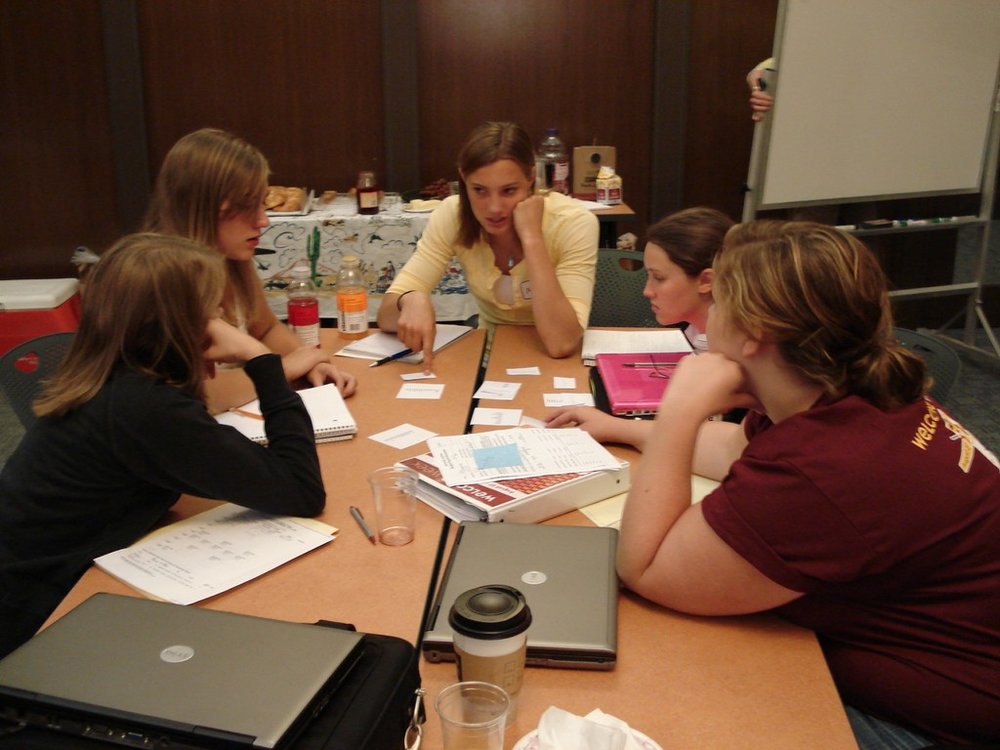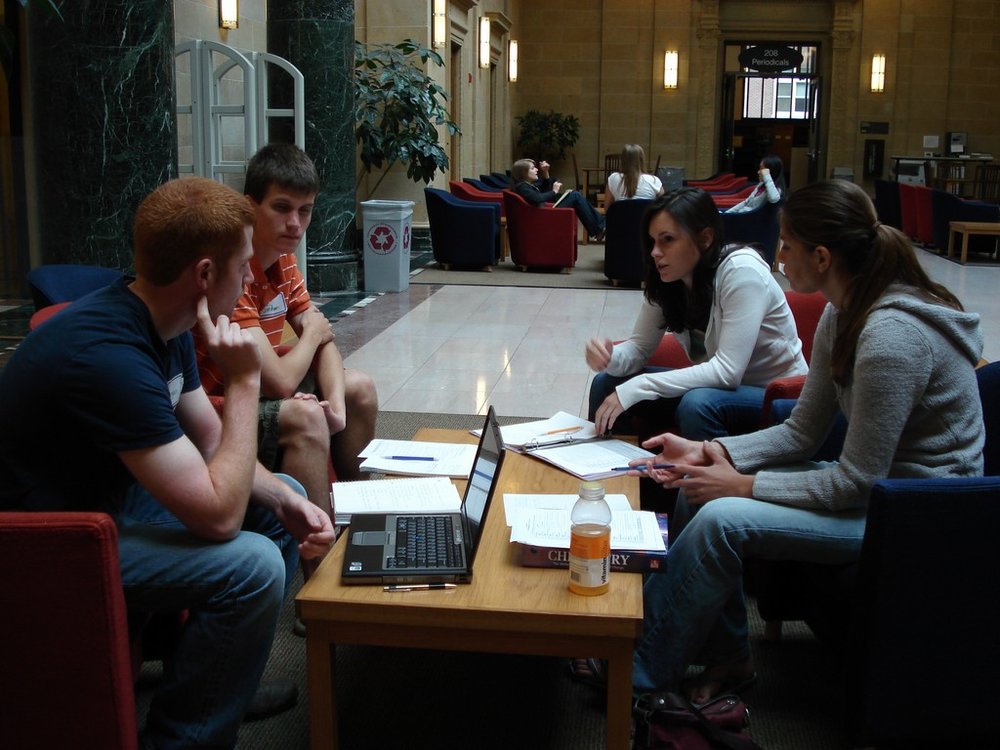
This blog focuses on my scholarship in my five research projects: learning assistance and equity programs, student peer study group programs, learning technologies, Universal Design for Learning, and history simulations. And occasional observations about life.
The impact of Supplemental Instruction on the performance of male and female engineers in a freshmen chemistry course.

This study used statistical analysis to examine correlations between first year engineering students’ use of SI and their performance in a required general chemistry course at Northeastern University. Overall we found that students who used SI were more motivated in General Chemistry than their counterparts. We also draw the following specific conclusions from our data: Students who were more confident that they would receive a high grade in General Chemistry at the beginning of the course had a higher average grade threshold for seeking SI. Students who sought SI exhibited a positive correlation between grade threshold for seeking help outside the classroom and final grade received. Females who used SI had significantly higher grades than females who did not. SI in the form of Chem Central, the Connections Chemistry Review, and the COE Tutoring Office were all found to have the potential to have a significant positive impact on students’ grades. Students who did not use SI were significantly more likely to skip lecture than students who do attend SI. Increased absenteeism in lecture was associated with lower final grades in both fall 2013 and fall 2014. Females were more likely to attend lecture regularly than males. When extra credit incentives were offered to attend lecture, both genders skipped significantly fewer lectures and received significantly higher grades. We believe the results we have found regarding relationships between students’ use of SI and their success in General Chemistry for Engineers can be applied to improve SI across the freshman engineering curriculum. For example, as Chem Central, the Connections Chemistry Review, and the COE tutoring office were all found to have a positive impact on students’ grades, resources like these could be created to help freshman students in their other courses. Further study of possible interaction effects among these and other variables for which we have data are ongoing. Our results also show that the students who often skip lecture are the students who do not take advantage of resources for SI and receive lower course grades. These may be students who need additional advising and mentoring during their freshman year in order to succeed. The issues raised are important topics of focus for future work in order to gain a further understanding of the impact of SI on freshman engineering students.
To download the annotated bibliography of more than 1,100 citations of postsecondary peer cooperative learning programs, click the following link, http://z.umn.edu/peerbib
Online Peer Assisted Learning: Reporting on practice

Peer Assisted learning (PAL) in-class is well-established and flourishing in higher education across the globe; nevertheless, interest is growing in online versions and is reflected by a number of pilot schemes. These programs have responded to perceived and actual needs of students and institutions; they have explored the available software packages and have begun to create a bank of learning through academic publications, institutional reports, evaluations, and SINET listserv discussions. This paper examines existing online PAL practice from Australia, Canada, the UK and the USA, and focuses on synchronous modes. We discuss (a) the context, mode, and scope of online PAL, and (b) implementation considerations. Despite some “teething problems” of these pilots we are convinced by the early and so far limited explorations highlighted here that online PAL can make a significant contribution to learners in higher education by improving engagement through the flexibility afforded by the online space.
To download the complete annotated bibliography of more than 1,100 citations of postsecondary peer cooperative learning programs, click on the following link, http://z.umn.edu/peerbib
Reaping what you sow: How the University of Bedfordshire uses experienced Peer Assisted Learning (PAL) students to inspire and nurture future generations of PAL leaders.
 Rapley, E. (2015). Reaping what you sow: How the University of Bedfordshire uses experienced Peer Assisted Learning (PAL) students to inspire and nurture future generations of PAL leaders. Journal of Pedagogic Development, 5(2). Retrieved from https://journals.beds.ac.uk/ojs/index.php/jpd/article/view/172/266
Rapley, E. (2015). Reaping what you sow: How the University of Bedfordshire uses experienced Peer Assisted Learning (PAL) students to inspire and nurture future generations of PAL leaders. Journal of Pedagogic Development, 5(2). Retrieved from https://journals.beds.ac.uk/ojs/index.php/jpd/article/view/172/266
As staff awareness and understanding of Peer Assisted Learning (PAL) has continued to develop, a conscious decision has been made to hand over greater responsibility and ownership of PAL to the PAL Leader student team. PAL is based on the Supplemental Instruction (SI) model with a broader interest in holistic development of the students beyond just subject course competence. The success of any PAL initiative rests upon the quality of the PAL Leaders who facilitate the sessions. Motivated, committed and enthusiastic PAL Leaders are key to ensuring that engaging and meaningful sessions are provided for first year students. With our mission to ensure PAL Leaders truly benefit and develop themselves during their tenure, it was felt that this transformation could only take place if PAL Leaders really had opportunities to step up and take ownership of PAL.
To download the complete annotated bibliography of more than 1,100 citations on postsecondary peer cooperative learning programs, click on the following link, http://z.umn.edu/peerbib
Exploring the possibility of introducing Supplemental Instruction at secondary school level.

Globally, mathematics and science pass rates at school level have been a much discussed and researched issue. Teachers are tasked with the responsibility of alleviating learners’ challenges associated with the learning of mathematics and science. Thus, teachers are pursuing innovative techniques for improving the understanding of and increasing the pass rates in mathematics and science. Academics in higher education have recognised that first year students experience difficulty with high-risk courses such as mathematics and science. One successful innovative strategy used at university level is Supplemental Instruction (SI). This is a peer support programme, which targets high-risk courses, and is aimed at developing subject-specific learning skills to foster independent learners, who will take responsibility for their own learning. This article explores the SI context at university level, with the aim of adapting this type of support programme at secondary school level. Data was collected via a questionnaire administered to selected academics, interviews with academics, as well as interviews with university students who have participated in SI sessions at university level. An analysis of the data suggests that schools may be able to adapt the SI model with the aim of assisting learners to develop key study skills to improve understanding in mathematics and science. This improved understanding of content could lead to an improvement in mathematics and science pass rates at secondary school level.
To download the complete annotated bibliography of more than 1,100 citations on postseconeary peer cooperative learning programs, click on the following link, http://z.umn.edu/peerbib
Exploring the emotional intelligence of student leaders in the Supplemental Instruction context.

An exploratory study of the emotional intelligence (EI) of student leaders participating in a Supplemental Instruction (SI) program was conducted to determine whether a significant relationship exists between leadership effectiveness and EI as measured by the Bar-On Emotional Quotient Inventory (EQ-i) and to assess the impact of the leadership experience on EI scores through pre- and post-testing. The results revealed a statistically significant difference in the Total EQ-i of the more effective leaders as compared to the others. The more effective leaders also scored higher on all the EQ-i subscales, with the differences on Social Responsibility, Impulse Control, and Reality Testing being statistically significant. As for changes in EI, only the scores on the EQ-i Problem Solving subscale increased significantly between the pre- to post-testing sessions. Implications for practice and future research are addressed.
To download the complete annotated bibliography of more than 1,100 citations for postsecondary peer cooperative learning programs, click on the following link, http://z.umn.edu/peerbib
Speech and language therapy students' experience of Peer Assisted Learning: Undergraduates investigate PAL as a means of enhancing academic and professional development
Guyon, A., Butterfint, Z., Lacy, A., Sanosi, A., Sheridan, K., & Unwin, J. (2015). Speech and language therapy students' experience of Peer Assisted Learning: Undergraduates investigate PAL as a means of enhancing academic and professional development. Journal of Learning. Retrieved from https://ueaeprints.uea.ac.uk/55820/1/PAL_Project_FINAL.pdf
The implementation of Peer Assisted Learning (PAL) on healthcare courses in Higher Education Institutions has been explored in a number of studies. This paper presents research into the experience of PAL on a BSc Speech & Language Therapy (SLT) programme. The research was conducted by final year undergraduate SLTstudents to form the basis for their final dissertations. The focus for their research was on the effects of PAL on academic and professional development for both mentees and mentors on the same course. Data were generated from standard PAL evaluations and focus roups. Findings indicate that mentees benefit from PAL in terms of their university experience and learning. Mentors benefited from opportunities to develop and practice skills for their future employment. Engagement with PAL is attributed toits structured yet informal nature and the enthusiasm of the mentors. However, the collaborative nature of PAL take time to develop, impacting on the behaviours of both mentees and mentors. Overall PAL offers mentees and mentors opportunities which enhance their academic learning and professional development.
To download the complete annotated bibliography of morethan 1,100 citations in postsecondary peer cooperative learning programs, click the following link, http://z.umn.edu
Analysis of student performance in peer led undergraduate supplements

Foundations of Chemistry courses at the University of Kansas have traditionally accommodated nearly 1,000 individual students every year with a single course in a large lecture hall. To develop a more student-centered learning atmosphere, Peer Led Undergraduate Supplements (PLUS) were introduced to assist students, starting in the spring of 2010. PLUS was derived from the more well-known Peer-Led Team Learning with modifications to meet the specific needs of the university and the students. The yearlong investigation of PLUS Chemistry began in the fall of 2012 to allow for adequate development of materials and training of peer leaders. We examined the impact of academic achievement for students who attended PLUS sessions while controlling for high school GPA, math ACT scores, credit hours earned in high school, completion of calculus, gender, and those aspiring to bepharmacists (i.e., pre-pharmacy students). In a least linear squares multiple regression, PLUS participants performed on average one percent higher on exam scores for Chemistry 184 and four tenths of a percent on Chemistry 188 for each PLUS session attended. Pre-pharmacy students moderated the effect of PLUS attendance on chemistry achievement, ultimately negating any relative gain associated by attending PLUS sessions. Evidence of gender difference was demonstrated in the Chemistry 188 model, indicating females experience a greater benefit from PLUS sessions. Additionally, an item analysis studied the relationship between PLUS material to individual items on exams. The research discovered that students who attended PLUS session, answered the items correctly 10 to 20 percent more than their comparison group for PLUS interrelated items and no difference to 10 percent for non-PLUS related items. In summary, PLUS has a positive effect on exam performance in introductory chemistry courses at the University of Kansas.
To download the complete annotated bibliography of more than 1,100 citations on postsecondary peer cooperative learning programs, click on the following link, http://z.umn.edu/peerbib
